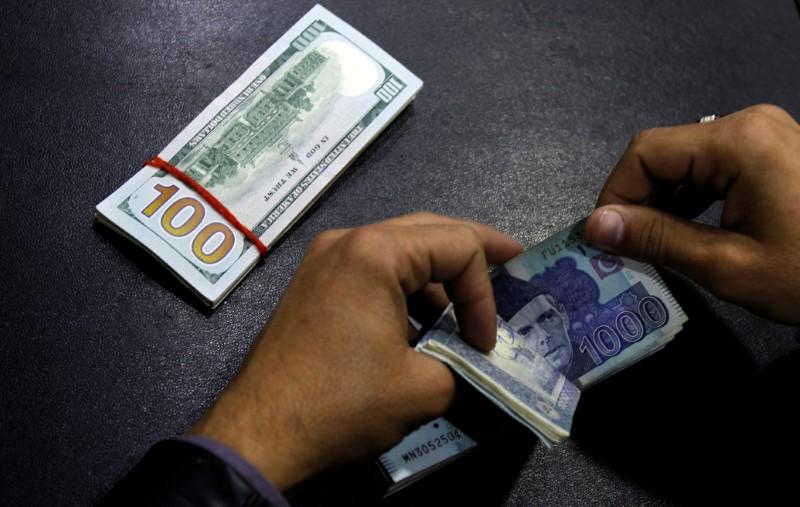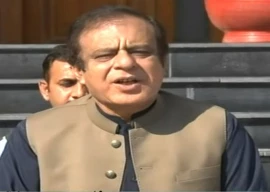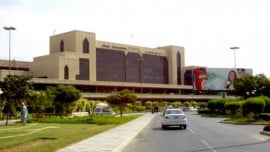
ISLAMABAD: Ratings – one of the top three credit rating agencies – has rated Pakistan ‘B-‘, which highlights a challenging external financing position such as low foreign currency reserves, weak public finances including large fiscal deficits, high government debt-toGDP ratio, etc.
To understand where we stand in terms of capacity to service the huge debt, a simple analysis of the last 10-year official statistics shows that debt levels in Pakistan have continuously been unsustainable in the long term and the lack of any heed to financial management has deteriorated the situation rather than articulating solutions.
The position is further compromised by massive borrowings by successive governments, both from external and internal sources, to bridge the twin deficits.
Total external debt and liabilities (EDL), amounting to $106.9 billion as of September 2019, depict an upward trajectory. As compared to $95 billion in the same period of previous year, EDL showed a hike of over $10 billion. On top of it, a lack of fiscal consolidation due to the disappointing revenue collection has further increased the debt-to-GDP ratio to 86.5%. As a matter of fact, debt servicing causes a decrease in the development expenditure, but despite a 35% reduction in the uplift expenditure, as reported by the State Bank of Pakistan (SBP), the fiscal indicators continue to show a depressing scenario.
On top of it, a slight increase in tax revenue and decrease in non-tax revenue have weakened the revenue mobilisation drive due to unimpressive tax efforts, both at the federal and provincial levels, and declining economic activity – particularly in the industrial sector.
The result is evident in the form of a widening fiscal deficit, which increased to 5% of GDP by the end of 2019. It ultimately suggests that the country’s debt servicing capacity has deteriorated and it will continue to acquire more debt to service the current debt. Consequently, the pressure on foreign currency reserves will mount further so as to bridge the gap between export earnings and high foreign exchange requirements for imports. Besides, a major part of the foreign reserves is consumed by debt servicing and just in FY19 Pakistan paid $11.8 billion in external debt servicing.
It is evident that the piling up of the debt stock is attributed to the very limited amount of non-debt creating flows such as foreign direct investment and exports, and the huge debt-creating inflows such as expensive imports, debt servicing, non-development expenditure, etc.
Export-import performance
According to data provided by the Pakistan Bureau of Statistics, the percentage change in exports in December 2019 over December 2018 shows a decline of 3.9%, due to which the foreign currency reserves face the wrath of huge debt-creating inflows.
Although imports decreased, the percentage change in imports was 10.33%, which means both imports and exports declined during the period, but the decline in imports was greater than the fall in exports.
This deteriorating impact is partially because of the rupee depreciation against the US dollar as the rupee stood at 138 to a dollar in 2018 whereas in 2019 the parity was 155.
In the case of Pakistan, the converse effect of currency depreciation on exports is well explained in the context of the Marshall-Lerner condition.
There are two reasons for it.
First, the imports do not respond greatly due to the devaluation because of a specific section of society that buys these imports regardless of the price change.
Second, even if the demand for Pakistani products rises, the structure of production, speed of adjustment or more recently the slowdown of the economy are some of the reasons due to which the currency devaluation barely affects the balance of trade.
Thus, together with the rising fiscal deficit, the currency revaluation losses also contribute significantly to the rise in public debt.
Export promotion
In this regard, the Export Promotion and Exemption Schemes 2019-20 have been launched to encourage the business community to get maximum benefit from these schemes and help boost the country’s exports.
There are mainly five different export promotion schemes, which have been automated to reduce human interaction and to ensure ease of doing business, which would result in boosting exports. Exemption from duties and taxes on all imported goods, including raw material, machinery and capital goods, is one of the major benefits.
According to a recent SBP report for fiscal year 2019-20, the export situation in Jul-Sept 2019 was optimistic with an overall increase of 2.4% inclusive of the devaluation effect.
However, major challenges such as time-consuming documentation and bureaucratic hurdles, which limit the country-wide adoption of these schemes by the business and trading community, result in failure to sustain the increase in export growth. Similarly, the major trend that we saw last year was the government’s focus on reducing the level of imports, which no doubt helped improve the trade deficit, but its counter-effect appeared in the form of decrease in demand that led to low economic activity.
Increase in remittance inflows – from $19.9 billion in FY18 to $21.8 billion in FY19 – reduced the current account deficit from $13.6 billion in FY18 to $10.3 billion in FY19. However, it negatively affected the import of commodities, ie textile, chemicals, metals, etc.
Therefore, along with the reduction in imports, there should have been an increase in exports to balance the situation.
Improvement in foreign currency reserves will also attract local and foreign investors. This sends a good signal about the debt-repaying capacity of a country and establishes its credibility in the international community.
Fortunately, foreign currency reserves are somewhat reassuring and increased to $9.4 billion in September 2019, which was equivalent to 1.9 month of import coverage compared to $7.6 billion (1.6 month of import coverage) earlier.
Summing up, the high rate of debt accumulation and rise in debt servicing has affected Pakistan’s development efforts and consequently its growth rate. Although the fiscal and external accounts are hanging by a thread, there still exists opportunities in terms of both debt-creating and non-debt creating flows that need to be utilised properly.
THE WRITER WORKS AS A RESEARCH ASSOCIATE AT THE SUSTAINABLE DEVELOPMENT POLICY INSTITUTE (SDPI), ISLAMABAD




































1713509570-0/Taylor-Swift-Album-Release-(1)1713509570-0-270x192.webp)






















COMMENTS
Comments are moderated and generally will be posted if they are on-topic and not abusive.
For more information, please see our Comments FAQ